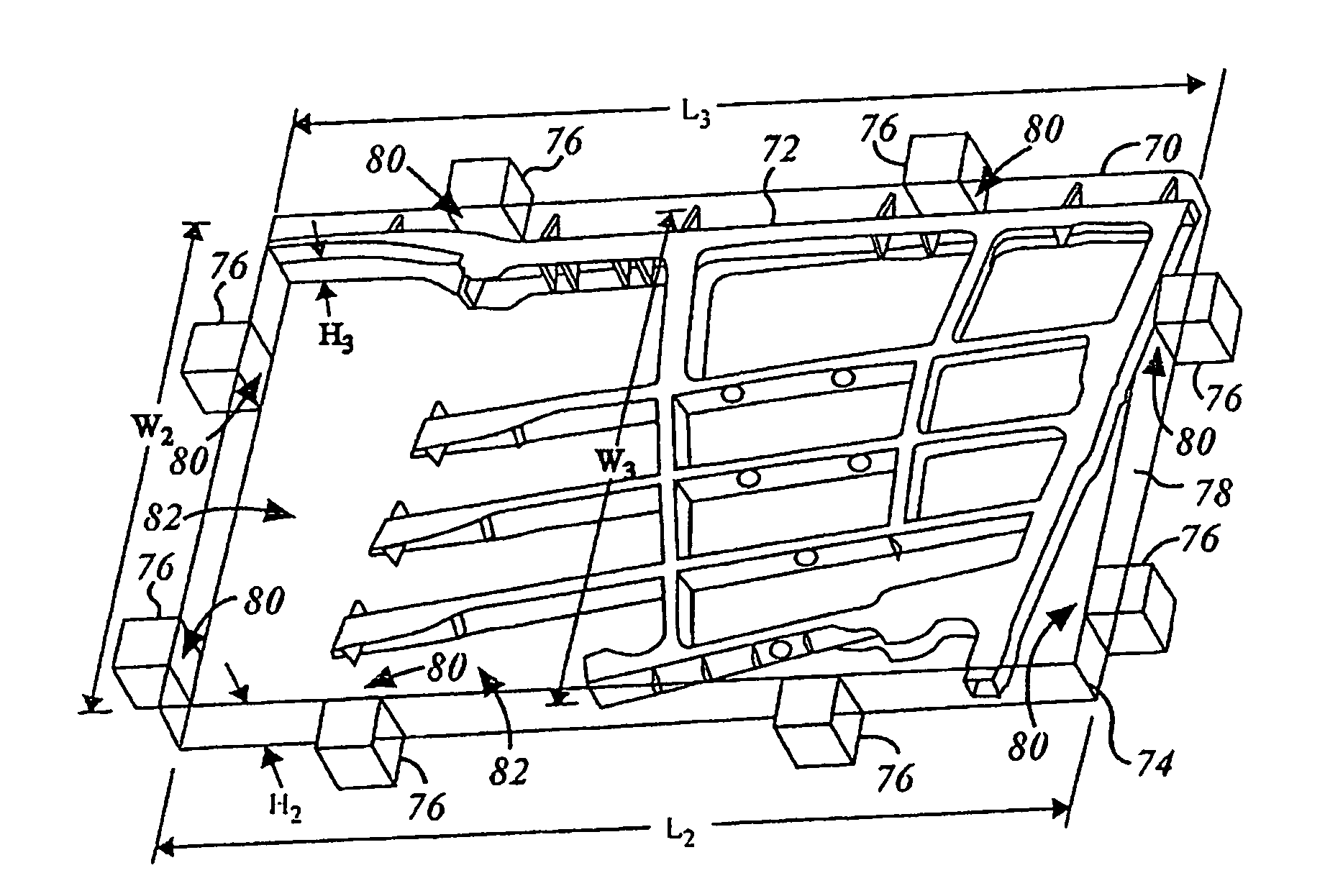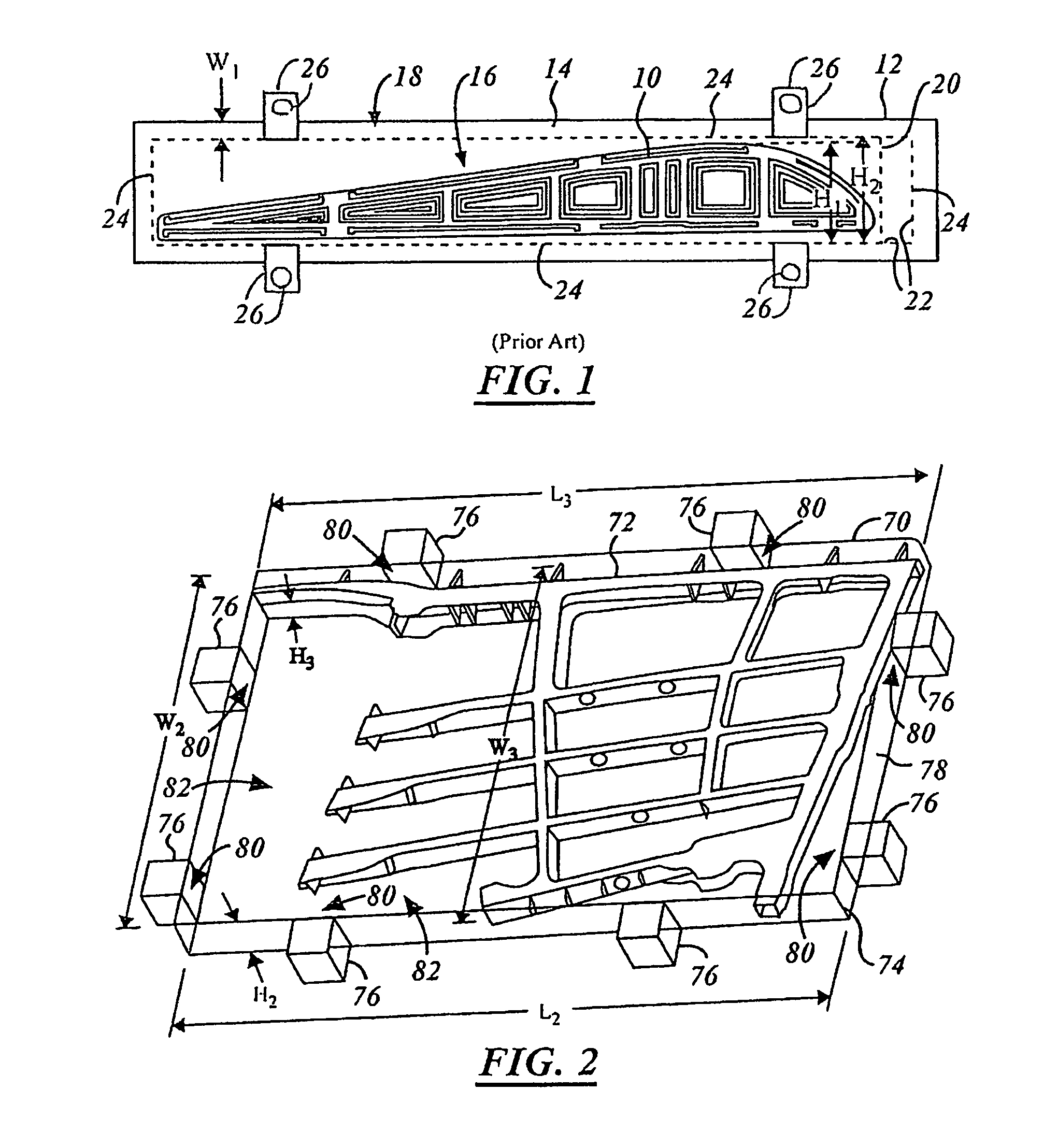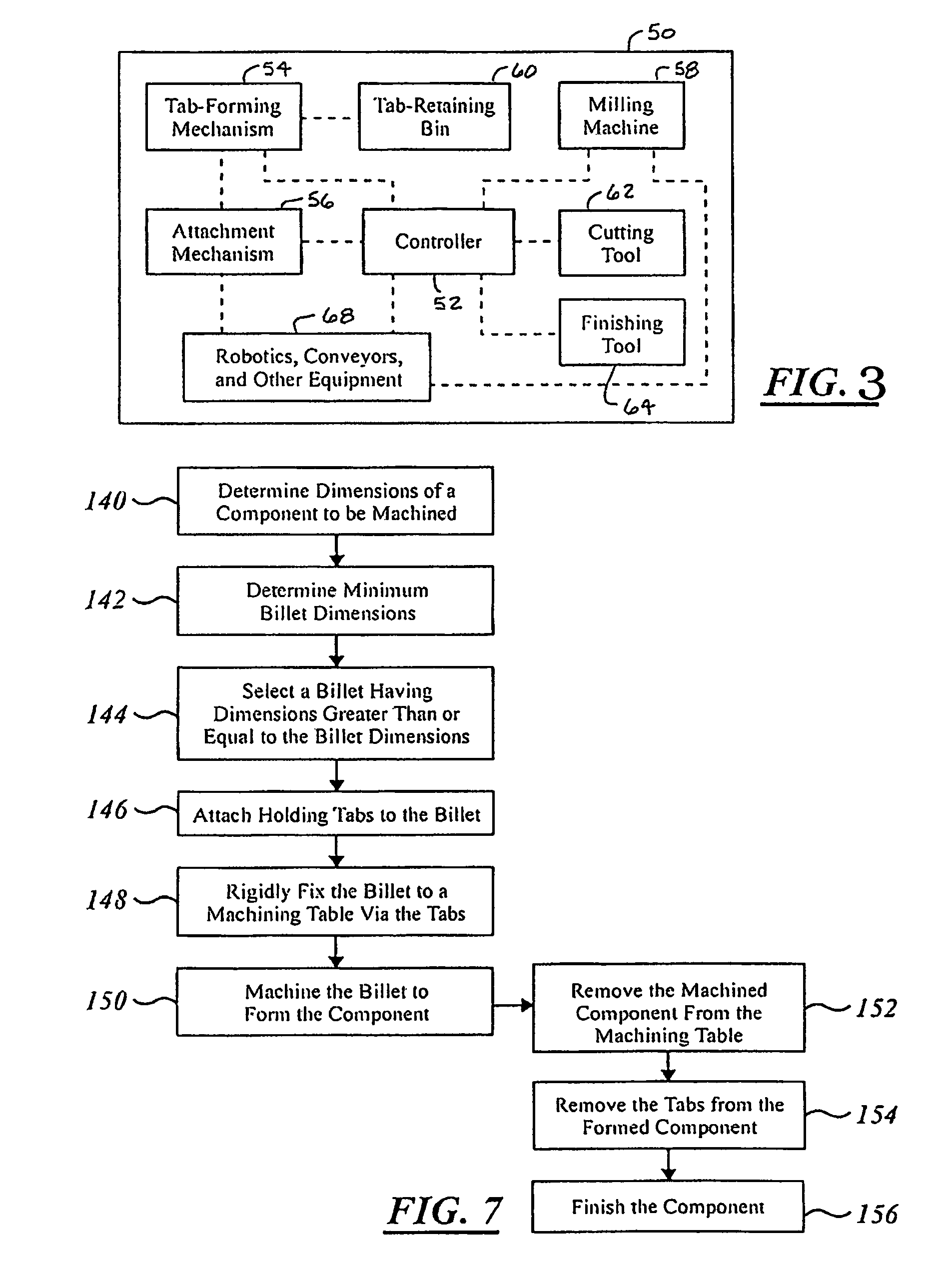Machining technique with selective and localized placement of tooling material
a tooling material and tooling technology, applied in the field of milling and machining processes, can solve the problems of only being able to use picture framing, affecting requiring significant scrap, so as to improve the performance of the frame, reduce the weight, and be convenient to use.
- Summary
- Abstract
- Description
- Claims
- Application Information
AI Technical Summary
Benefits of technology
Problems solved by technology
Method used
Image
Examples
Embodiment Construction
[0022]In each of the following Figures, the same reference numerals are used to refer to the same components. The present invention provides various machining techniques that may be utilized in forming or creating various components for aeronautical applications, land-based vehicle applications, non-vehicle applications, or other applications known in the art that require similar machining.
[0023]In the following description, various operating parameters and components are described for one constructed embodiment. These specific parameters and components are included as examples and are not meant to be limiting.
[0024]Also, in the following description the terms “billet” or “billet of material” refers to a stock piece of material, which may be in a solid or hollow semi-finished form. A billet may be used to form long tubular products such as bars and channels. A billet may be generally round or square in shape or may be of various other shapes. A billet has been hot worked by forging,...
PUM
| Property | Measurement | Unit |
|---|---|---|
| size | aaaaa | aaaaa |
| width W1 | aaaaa | aaaaa |
| outer dimensions | aaaaa | aaaaa |
Abstract
Description
Claims
Application Information
 Login to View More
Login to View More - R&D
- Intellectual Property
- Life Sciences
- Materials
- Tech Scout
- Unparalleled Data Quality
- Higher Quality Content
- 60% Fewer Hallucinations
Browse by: Latest US Patents, China's latest patents, Technical Efficacy Thesaurus, Application Domain, Technology Topic, Popular Technical Reports.
© 2025 PatSnap. All rights reserved.Legal|Privacy policy|Modern Slavery Act Transparency Statement|Sitemap|About US| Contact US: help@patsnap.com



